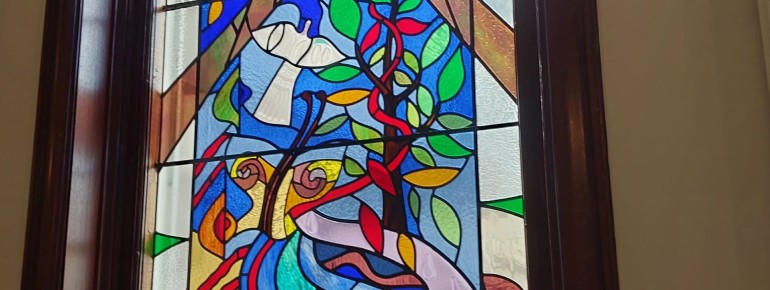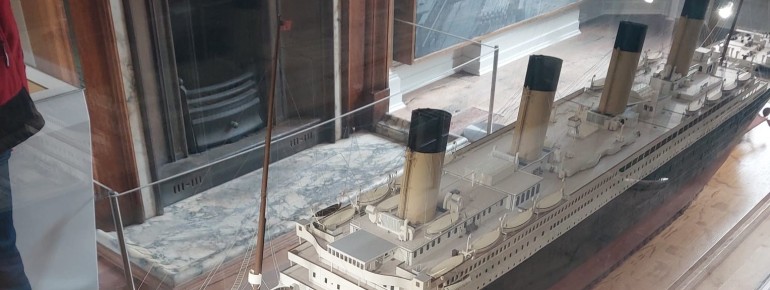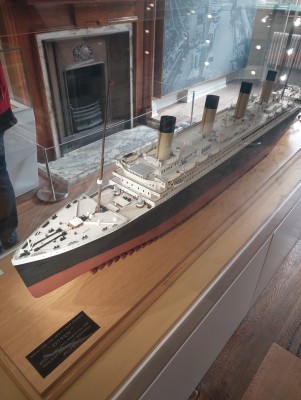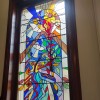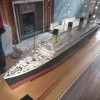Contents
Description
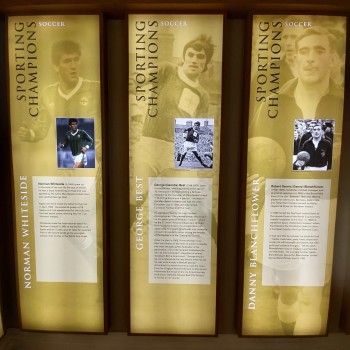
Belfast City Hall is not only the magnificent centerpiece of Belfast, but also a living testament to Northern Ireland's industrial heyday. The majestic building with its characteristic copper dome and four corner towers made of Portland stone has dominated Donegall Square since 1906 and embodies the ambitions of a city that developed from the textile industry into a shipbuilding metropolis. Architecture enthusiasts get their money's worth here, as do history buffs: the magnificent interior with marble staircases, mosaic floors and hand-carved woodwork reflects the pride that Belfast had in its new city status at the beginning of the 20th century. Today, visitors can take a look behind the scenes of the busy administrative building on daily guided tours.
Guided tours through representative rooms
The daily guided tours last 45 to 50 minutes and provide access to normally closed areas. In the council chamber, visitors can sit in the seats of the 60 elected city councilors and admire fascinating artifacts, including the royal thrones of King George V and Queen Mary from 1921. The Robing Room displays the significant insignia of the mayor, including the diamond-studded jewels of Belfast's Lady Mayoress. In the state rooms with their extraordinary stucco work, hand-carved wood paneling and hand-woven silk and wool carpets, visitors walk in the footsteps of kings, presidents and significant figures in Belfast's history.
Permanent exhibition in City Hall
The extensive 16-room visitor exhibition on the ground floor provides a self-guided journey through Belfast's past and present and presents the city's diversity in six thematic areas. From the industrial roots as "Linenopolis" through the golden years of shipbuilding to modern innovation, the exhibition tells the complete city history. Magnificent stained glass windows function as true works of art, with each individual window telling a chapter of Belfast's history - from industry and peace to hardship and remembrance. A dedicated City Hall App enables self-guided tours through the impressive stained glass window collection as well as through the building's artworks and artifacts. Audio headsets offer additional content in English and Irish that deepen the exhibition experience and illustrate the historical connections.
Historic gardens and monuments
The well-maintained gardens around the majestic building are a true open-air museum of Belfast's history. The famous Titanic Memorial Garden honors the victims of the ship disaster with the statue of the Greek goddess Thane, who holds a black laurel wreath of death, while at her feet two sea nymphs hold the body of a drowned sailor. The marble statue of Queen Victoria made of Sicilian marble, designed by Sir Thomas Brock, sits majestically in front of the main entrance and commemorates the monarch who granted Belfast city status in 1888. The Cenotaph and the Garden of Remembrance commemorate those who fell in World War I, while various monuments and sculptures commemorate significant figures and events in the city's history. In winter, this historic backdrop transforms into the popular Belfast Christmas Market with traditional stalls, turning the gardens into a festive fairyland with mulled wine, international delicacies and the famous Strawberry Bear.
Historical Information
The history of Belfast City Hall is inextricably linked to Belfast's rapid rise in the 19th century. For centuries, Belfast was only a small town, but the booming linen and shipbuilding industry transformed it into a flourishing metropolis. As "Linenopolis", Belfast led the world production of linen, while the famous Harland & Wolff shipyards gave rise to ships like the Titanic. In 1888, Queen Victoria honored this impressive industrial success and officially granted Belfast city status - a milestone that required an appropriate representative building. An architectural competition was announced, which Alfred Brumwell Thomas from London won with his ambitious Baroque Revival design. Construction began in 1898 on the site of the old White Linen Hall, and after eight years of construction, the magnificent building was ceremoniously opened on August 1, 1906. With construction costs of £369,000 - approximately 128 million pounds by today's standards - Belfast demonstrated its newly acquired wealth and pride. The finished masterpiece made of Portland stone with its characteristic copper dome not only shifted the city center southward, but also made the previously unknown architect Thomas famous overnight.
How to get there
By car
There are several paid parking garages in the nearby area.
By public transport
There are several different bus stops around Belfast City Hall.

